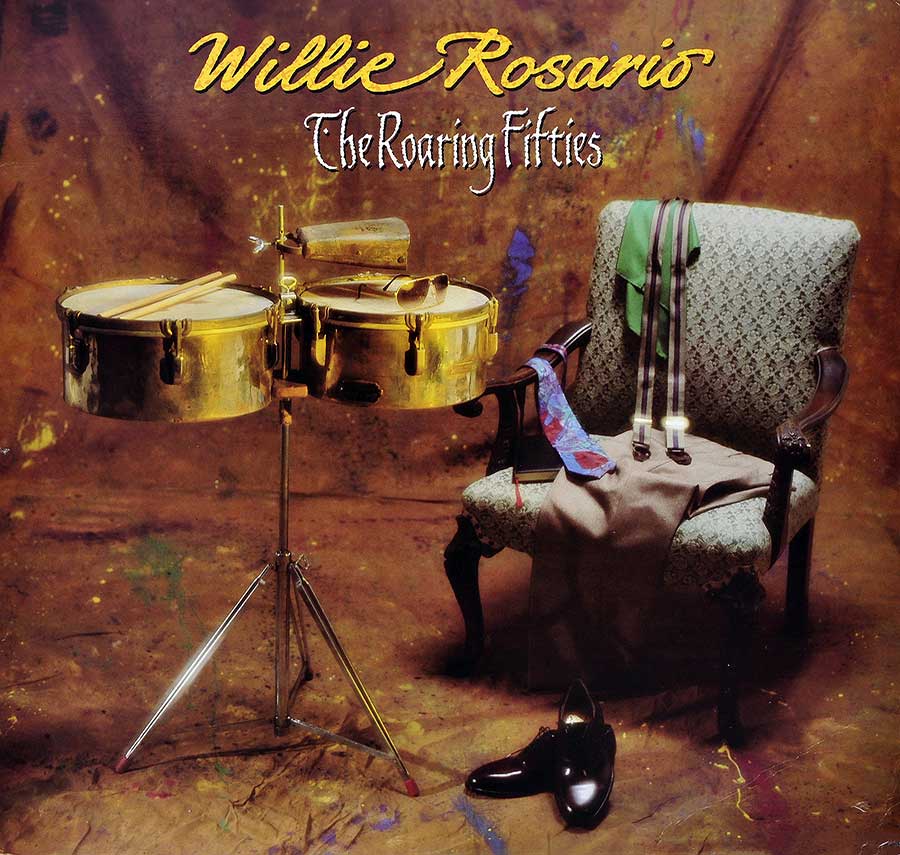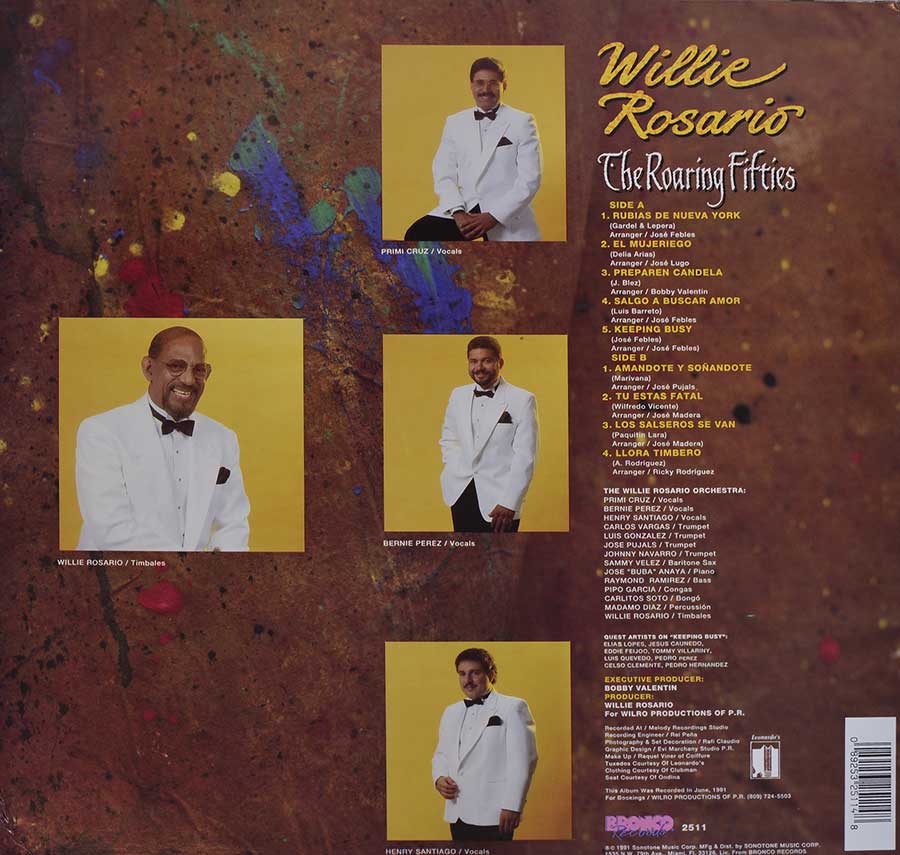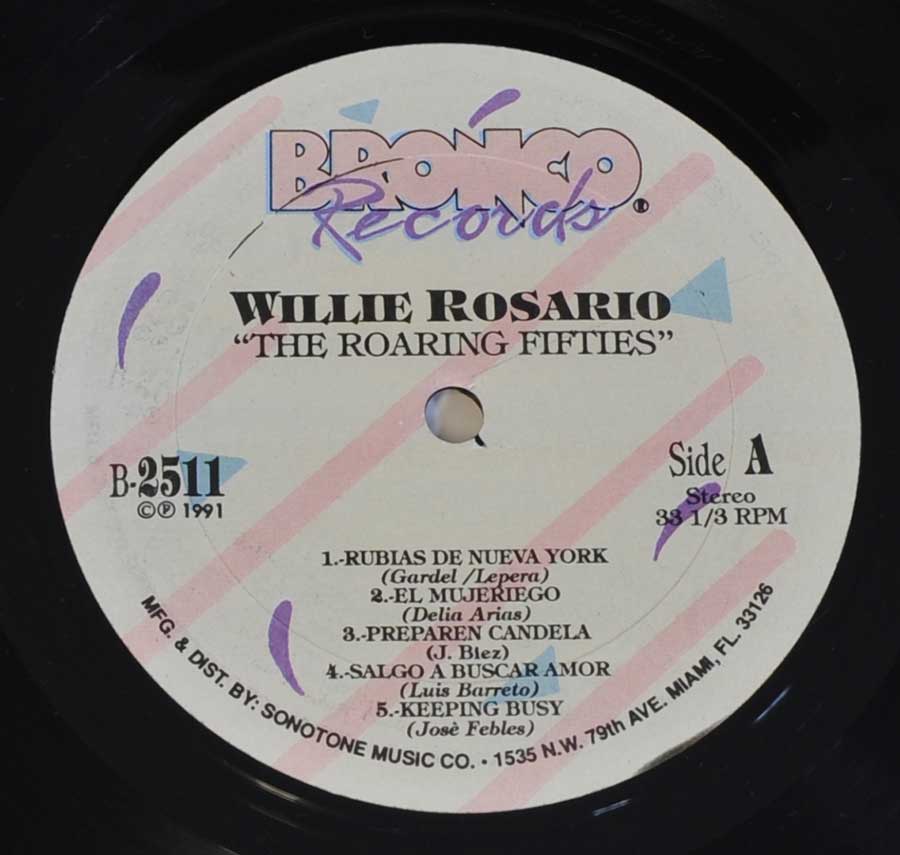The Roaring Fifties – A Timeless Salsa Odyssey by Willie Rosario Album Description:
Historical Context & Cultural Atmosphere
In 1991, at a time when salsa was navigating new waves and traditional forms were jostling with modern fusions, Willie Rosario released his 26th album, The Roaring Fifties. This album emerged during a dynamic period in Latin musicÑone foot firmly planted in the rhythmic roots of charanga and Cuban traditions, the other experimenting within the evolving salsa and tropical framework. As an elder statesman of salsa, Rosario delivered a work that both honored the genreÕs heritage and underscored his enduring relevance.
Musical Exploration & Stylistic Nuances
The Roaring Fifties is less a nostalgic glance backward than a refined reimagining of Latin rhythmsÑmelding charanga's lighter instrumentation with salsaÕs dance-floor potency. Through this release, Rosario played with tempo and mood, weaving playful arrangements like Rubias de Nueva York and Preparen Candela alongside the smooth, romantic swing of Salgo a Buscar Amor and Am‡ndote y So–‡ndote. The album stands out for its versatilityÑembracing tradition even as it flirted with a more contemporary production sheen.
Key Collaborators & Musical Personnel
Behind the albumÕs pulse was the dual leadership and creative chemistry between Willie Rosario himself and veteran producer Bobby Valent’n. Rosario not only co-produced the record but also fueled its rhythmic backbone through his masterful timbales playing. Trumpet contributions, including those by JosŽ Pujals, helped shape the melodic and horn-driven textures that are a hallmark of RosarioÕs orchestration style. The engineering finesse of Rei Pe–a elevated the albumÕs sound, ensuring clarity and polish in every phrase.
Band Evolution & Career Milestones
By the early 1990s, Willie Rosario was already synonymous with salsa sophistication. Nicknamed ÒMr. Afinque,Ó he had over four decades of musical leadership under his belt, having launched his band in New York in 1959, forging his path through radio, performance, and composition. The release of The Roaring Fifties reaffirmed his position in the salsa world, linking his storied past with contemporary sensibilitiesÑa bridge between the genreÕs golden era and its modern iterations.
Controversies & Creative Tensions
While The Roaring Fifties doesnÕt appear to have sparked overt controversy, its title may have sparked curiosityÑinvoking an era known for innovation and cultural shifts. Perhaps Rosario intended the name as a metaphorical nod to his own ÒroaringÓ mastery, a bold declaration of staying power rather than a literal homage to the 1950s. In any case, the albumÕs confident precision and clear production choices subtly subvert any expectation of retro clichŽ.
Unique Contributions & Artistic Highlights
RosarioÕs signature lies in his rhythmic finesse and orchestral savvy. Here, his use of timbales isnÕt just a backboneÑitÕs a voice, conversing with the vibrant horn sections and percussion interplay. Adding trumpet lines by seasoned musicians like JosŽ Pujals offered soaring melodic counterpoints that enliven the arrangements. This album also reflects RosarioÕs lifelong dedication to precise, expressive salsa, blending impeccable arrangements with emotional depth.


